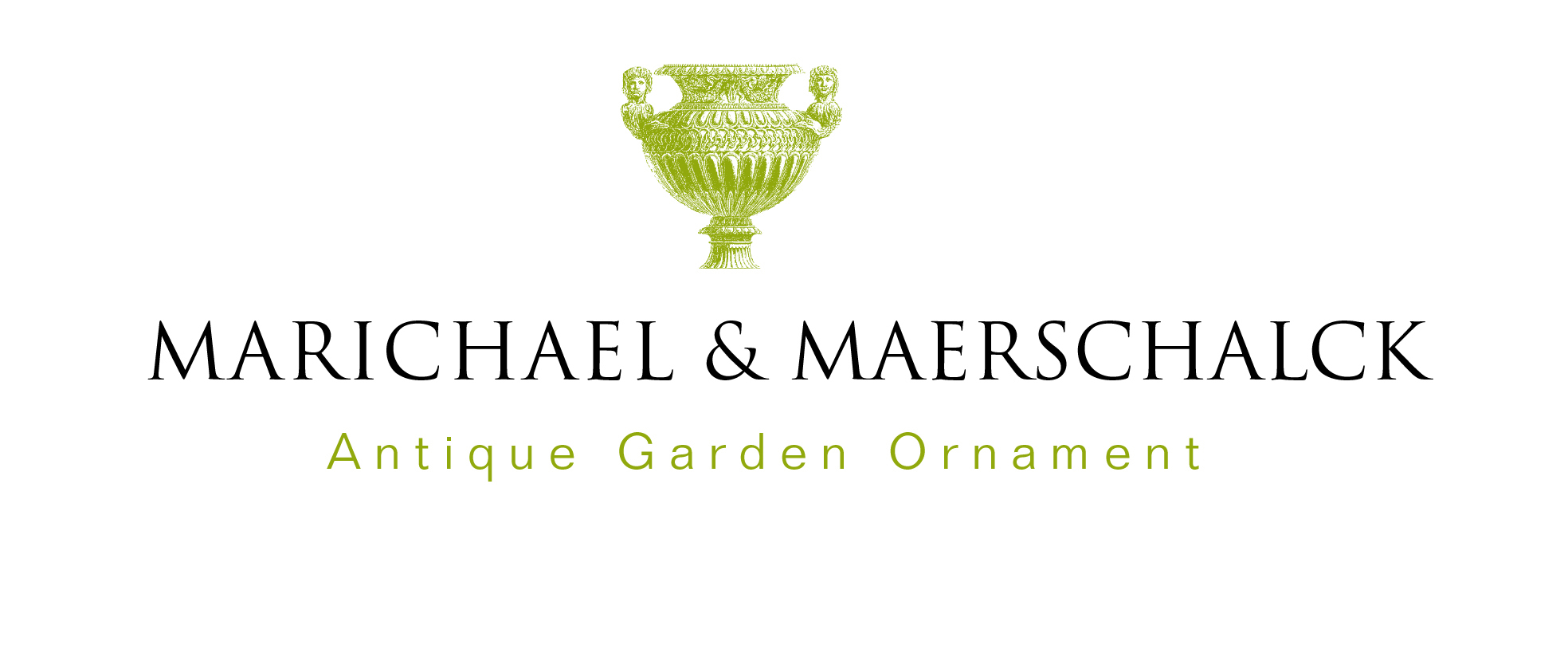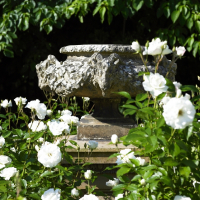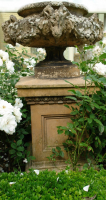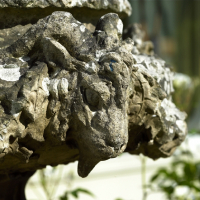- Home
- Pulham steengoed urne, Engeland, 19de eeuw
Pulham steengoed urne, Engeland, 19de eeuw
Een Pulham steengoed (zwaar aardewerk) urne, laat 19de eeuws. Staat op een Pulham steengoed pedestal, gemarkeerd 'Pulham - Broxbourne', circa 1850.
Afmetingen: 82 cm diameter, +/- 50 cm hoog. Sokkel: 0.57 x 0.57 x 0.83 h.
Staat: Vaas in zeer goede staat, sokkel enkele barstjes en schilfers.
Referentie: SO062006/195-LA021998/Z
Literatuur:
Het bedrijf Pulham werd gesticht in 1820 maar begon pas steengoed (terracotta) te produceren vanaf rond 1846 tot vroeg in de 20ste eeuw, met ateliers in Broxbourne, Hertsfordshire. Vanaf 1880 ongeveer legde het bedrijf zich voornamelijk toe op tuin- en landschapsornamenten. Een kataloog van 1915 geeft mee dat hun artikelen gemaakt werden van Pulhamite- steen, wat is considered the best material for all designed stonework in connection with the garden for the following reasons: Pulhamite Stone is more durable than natural stone, for it never decays and never shells or flakes; cement is not used in its composition, it is a lighter substance, making more elegant productions than any other so called artificial stone. This is an important point, as the sides of a Pulhamite vase give more space for soil. It is the colour of light stone. There is nothing deleterious to plant life in it, in fact, owning to the nature of the material, the opposite may be said in its flavour. We guarantee its durability, and can refer to work which has been exposed for over 70 years. If desired, we can reproduce in the Antique style, and copies can be made from practically any existing examples.In The Art-Journal Illustrated Catalogue of the Great Exhibition, Londen, 1862, wordt Mr. Pulham, van Broxbourne, beschreven als a large exhibitor of works in terra cotta, not only for architectural purposes, but for those of gardens, conservatories, and general ornamentation of grounds. They are of excellent design, carefully and skillfully modelled, and so 'baked' as to be uninfluenced prejudicially by weather.Het bedrijf kreeg opdrachten van koning Edward VII, koning George V en van koningin Alexandra.
Antieke Tuinornamenten
Viooltjesdreef 39031 Baarle-aan-de-Leie
info@antieke-tuinornamenten.be+32 9 282 20 97+32 475 53 41 63
Openingsuren
Bezoek aan de tuin enkel na afspraak.



